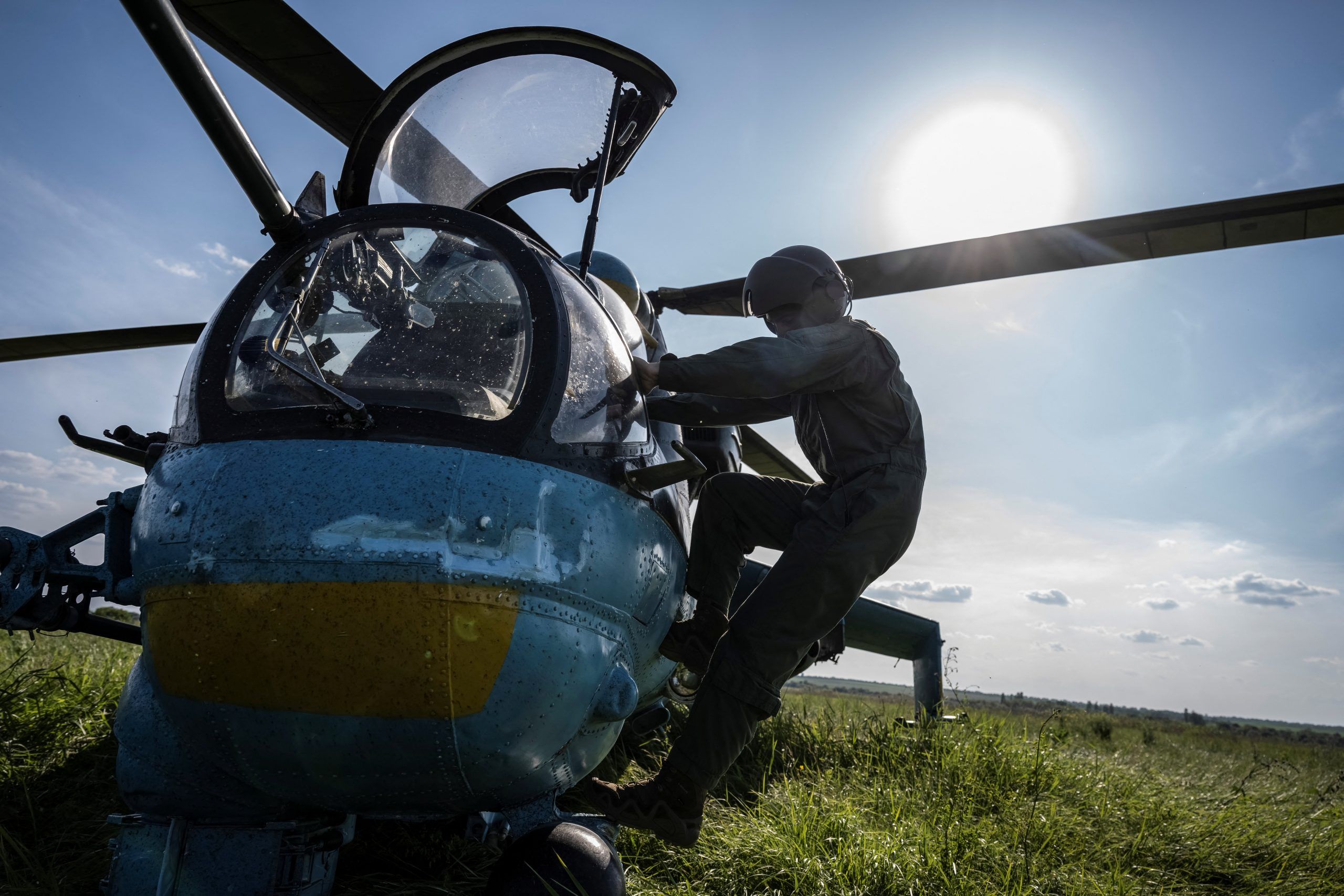Ukraine’s Counteroffensive Is Underway: Be Patient
This critical campaign isn’t just about tanks and other flashy equipment, it’s about the less glamorous supporting kit and personnel.
Ukraine astonished the world last summer with its lightning offensive to re-capture huge swathes of territory in and around Kherson and Kharkiv. Ukraine’s current counter-offensive likely will be slower, deadlier, and less impressive in making immediate territorial gains. But be patient — that does not mean it will not be a success.
Ukraine’s long-awaited counteroffensive is in its infancy. Much has been made of Ukraine’s Western-outfitted, NATO-trained maneuver brigades. These platforms and capabilities are vital to success, and the focus on delivering them to Ukraine and training Ukrainian forces on maneuver is justified. Yet in a large-scale, combined arms offensive against an entrenched enemy, it is less-celebrated capabilities that likely will prove decisive: the engineering equipment used to breach complex obstacles emplaced by Russian forces around key objectives, the trucks bringing supplies to the front and evacuating broken vehicles for maintenance, and the field ambulances evacuating casualties from the front to hasten the process of getting wounded soldiers back into the fight.
Into the Breach
After its losses in the fall, Russia spent the winter and early spring undertaking a massive military engineering effort. Though there have been impressive work done to map these constructions, it is important to note that each dot on a map represents a different site with a different purpose. Some improve the survivability of forces – such as firing positions or trenches. Others represent obstacles, which are constructed or emplaced to counter an enemy force’s mobility by slowing them down, forcing them to take a route where you can more easily target them, or by blocking their movement entirely.
The best way to deal with an obstacle is to avoid it altogether. But when it’s unavoidable, the attacking forces must breach it. Ukraine is currently in a process of probing Russia’s defenses and conducting misdirection before it commits significant engineering and combat capability.
Since Russia has used a combination of different types of obstacles – tank ditches, anti-tank and anti-personnel mines, dragon’s teeth, and concertina wire – breaching likely will require a combination of equipment. To date, the United States has provided 18 armored bridging systems, “mine clearing equipment”, and supplies for explosive breaching operations. The mine-clearing equipment likely includes a combination of mine rollers and plows, as well as vehicle-borne or trailer-towed mine-clearing line charges (MICLICs) – a system that launches a rocket tied to a line that has explosives on it. By firing the rocket over a minefield and then detonating the explosives, you can reduce the minefield sufficiently to allow a vehicle with a mine plow to clear a path. (Russian sources now say MICLICs are now in use by the Ukrainians.)
The bridges can span a gap of 60-80 feet depending on the type. However, there is another drawback: they only can hold up to 60 tons. This means that they will struggle to hold up to a Leopard 2, and if a tank breaks down, the bridges may not be able to bear the weight of a Leopard being towed by a large truck.
Get the Latest Get regular emails and stay informed about our work Email Δ
Amateurs talk strategy; professionals talk logistics
As noted above, Ukraine will need to slowly probe Russia’s defenses to find obstacles that can be breached and exploited. They will then need to mass their breaching equipment and follow-on forces in that location and break through the obstacles before moving forward. This whole time, they will be burning fuel, firing shells, eating rations, and evacuating wounded personnel and damaged equipment. Ukraine’s ability to exploit success will rely heavily not just on the tanks and artillery, but on their ability to sustain these platforms and the troops operating them.
Large-Scale Combat, Large-Scale Casualties
Just as the heavy equipment transporters (HETs) are taking damaged tanks to the rear for repairs, armored and soft-skinned field ambulances will be rushing Ukrainian casualties away from the front lines for medical treatment. When the counteroffensive begins in earnest, Ukrainian casualty numbers will spike to levels that may seem jarring to Americans who are used to two decades of low-intensity conflict. Unlike the wars in Iraq and Afghanistan or the early stages of this war, the counteroffensive likely will be a large-scale combat operation in which one side is attacking an entrenched enemy. Such operations are assumed to result in 20% casualty levels, with those levels spiking to nearly 70% for units conducting breaching operations. (The total Ukrainian combat force may have as many as 70,000 troops. There will be casualties, but it would be wrong to assume this means Ukraine is performing poorly.
Battlefield Necessity is the Mother of Invention
Ukraine’s counteroffensive faces a series of daunting challenges. While foreign aid has provided them with an extraordinary opportunity for success, it also has caused dilemmas. The Ukrainians have tanks and artillery but a limited number of armored bridges to cross tank ditches, only certain trucks that can tow the tanks, and a dwindling supply of artillery munitions.
Yet if we have seen one constant during this fight, it is Ukraine’s ability to adapt and overcome. When they were short on armored ambulances, they started a full-press campaign – including an Indiegogo page – that yielded donations in money and in-kind. With limited mine-clearing equipment, there are reports of the Ukrainians disarming mines manually at night in order to clear a path for probing attacks. In doing so, they not only save an element of surprise; they also save mine-clearing equipment for larger-scale attacks.
Although the counteroffensive now underway may be slow and deadly, and though the Ukrainians still face capability gaps despite a full-court press of donations from partner nations, Ukrainian success is still a very real possibility.
Whether the Ukrainians achieve success, however, likely will rely far less on the flashy tanks and artillery and far more on their ingenuity and their ability to breach obstacles, sustain operations, and refit their injured forces and damaged equipment.
Ann Marie Dailey is a former Senior Advisor to the Assistant Secretary of Defense for International Security Affairs in the Office of the Under Secretary of Defense for Policy. She is a geopolitical strategist with deep expertise in Europe, Eurasia, and energy and climate resilience with two decades of study and experience in the public and private sectors. She has a Master’s Degree in International Economics from the Johns Hopkins School of Advanced International Studies and is a Captain in the United States Army Reserves.
Europe’s Edge is CEPA’s online journal covering critical topics on the foreign policy docket across Europe and North America. All opinions are those of the author and do not necessarily represent the position or views of the institutions they represent or the Center for European Policy Analysis.
Source: Center for European Policy Analysis


